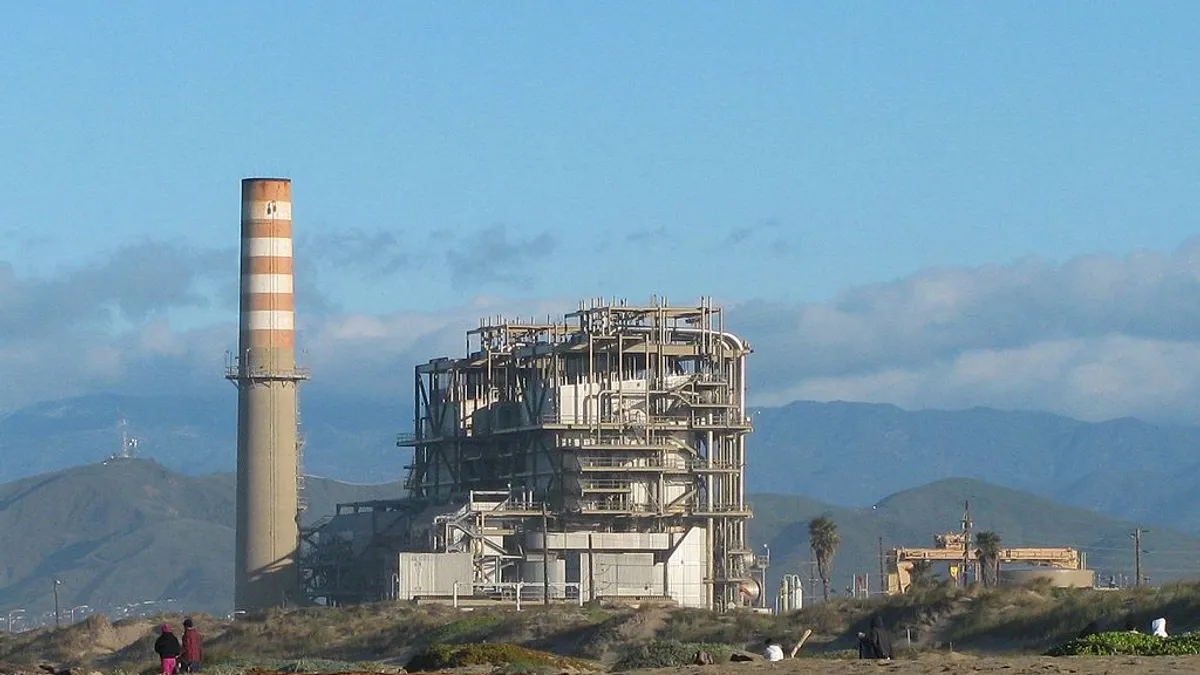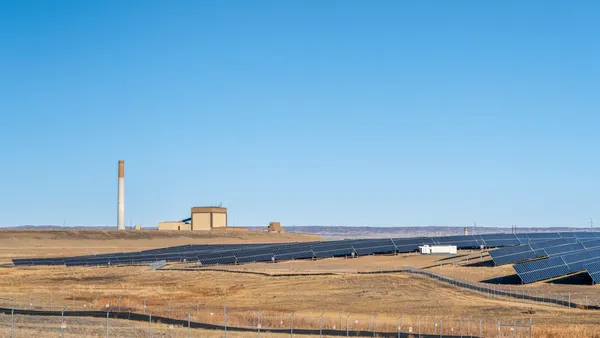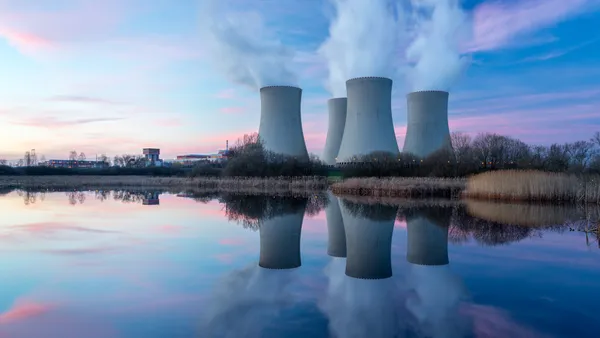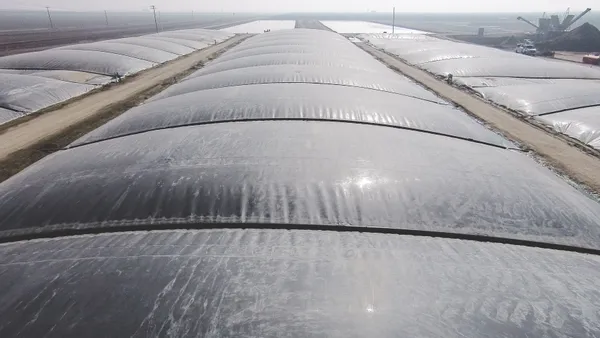Dive Brief:
- Natural gas used for electricity generation has peaked thus far in 2017 at 41 billion cubic feet per day (Bcf/d), a burn rate achieved on July 2 according to data from PointLogic Energy and noted by the U.S. Energy Information Administration.
- While the summer is not over yet, that peak daily burn rate would be slightly below last year's peak of 42 Bcf/d which occurred on Aug. 11. But for the full year, EIA expects gas burn to be about 9% lower than in 2016.
- While gas prices are higher than they were last year, Morgan Stanley predicts this could be a good summer for gas drillers as power plants are still burning large amounts and prices have moderated somewhat.
Dive Insight:
Natural gas prices are still above last year's levels but have pulled back to below $3/MMBtu, according to Morgan Stanley. Given average weather, however, the firm also expects that prices could rebound to $3.25/MMBtu later this year.
The higher prices have meant less gas burn and more coal: According to EIA data, gas used for power generation averaged 27.1 Bcf/d from April 1 through July 25, or about 7% less than the same period last year. But while power burn in 2017 is lower than in 2016, the agency noted that "it is still relatively high compared with the previous five-year average for that period."
Higher gas prices explain "part of the decrease," said EIA. Average natural gas prices at power plants were $1.02/MMBtu higher in the first half of 2017 compared to the first half of 2016, the agency said, while coal prices were flat for the same period.
Coal generation had topped natural gas every year until 2016 when gas generated 34% of the United States' power, compared with about 30% for coal. But this year EIA predicts they will be almost equal, with coal expected to generate 3.453 billion kWh/day compared with 3.432 billion kWh/day for natural gas.
EIA also expects natural gas and coal to generate roughly equal amounts of energy in 2018.
The agency's data show that coal provided 30% of utility-scale U.S. electricity generation from January to April this year, while natural gas provided 28%. For the full-year, EIA is forecasting gas used to generate electricity will average 25.9 Bcf/d, or about 9% lower than last year.
"Overall electricity generation is expected to be slightly lower than the 2016 level, and natural gas’s share declines because of larger shares from renewable sources (particularly hydropower) and coal-fired generation," the agency said.















